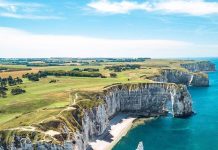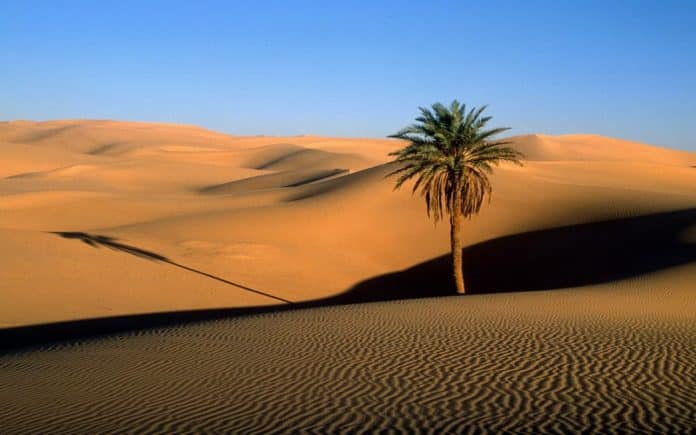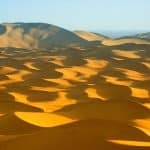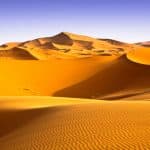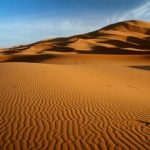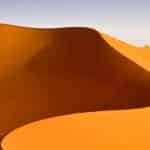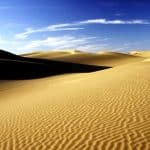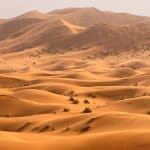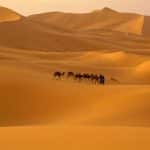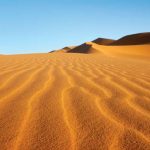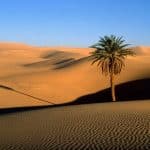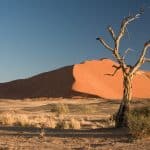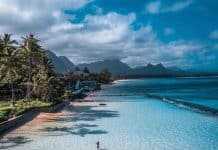Imagine standing on a large sand dune overlooking a fortification that peeks out from the sand like a statue that’s faced against the harsh entropy of time. A fortress that once housed armies from various different Kingdoms, Fiefdoms, Empires and more. A fortress that ranges from the time of Alexander the Great.
Or imagine sitting atop a camel, overlooking the vast eternity of the sky above, and the horizon before you as the majesty of the Desert swirls gently around you in a gentle breeze. Sand and nothing else seemingly stretching on for eternity.
Sounds interesting, and exciting, right? Well, luckily for you there’s quite a bit that you can do out in the Sahara Desert. The Sahara is perhaps a unique ecosystem found on earth – a veritable one of a kind that has no equal anywhere else. It’s as large as the United States, and borders on at least 10 different countries.
For any enterprising traveler to the Sahara though, you need to be prepared though. For all of its beauty, there is also danger to be found. Knowing where to go, how to dress and equip yourself, and even knowing what’s in store for you can help you out immensely.
Where to Go
Surprisingly, for as big as the Sahara desert is, you can’t just “go” wherever you want to get to it. Sure, you could touch down in a friendly country that borders the desert and just walk off into it, but that’s a recipe that’s ripe to get you killed. The Sahara Desert is simply far too big, too hot, and too inhospitable to just go into on a lark and expect to come out alright. It’s not like a weekend drive through the Midwest United States.
So where do you go exactly to get there?
Luckily, there are a few places that any traveler destined for the Sahara can go to reach – places that cater exclusively to tourists who want to travel with well-seasoned and well-trained personnel to carry them safely through the sand.
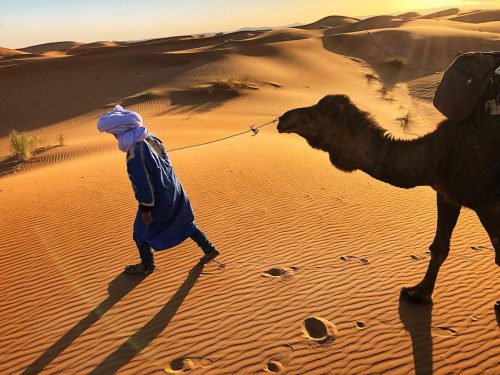
The first location that you might want to go to is Morocco. The High Atlas Mountains borders the Sahara Desert and is perhaps one of the most accessible places that you can get to. Any tourists or traveler looking to go through one fertile area to a non-fertile area will be welcomed in the Draa Valley. Best of all, many trans-Saharan camel convoys tend to begin in this area and travel for 52 days to reach Timbuktu. Of course, for people who don’t WANT to travel for nearly 2 months across inhospitable land, there are much shorter camel excursions that head out from M’Hamid, Merzouga, and Erg Chebbi. Some Camel excursions even specialize in “Day Trips” that see visitors leaving for just a day before night falls. All of which is a one day journey from Marrakesh.

The second location that you might want to consider is in Tunisia. The southern portion of the country cuts out into the Northern part of the Sahara Desert and is known for its many dunes, beautiful sunsets, and chilly breeze at night. In fact, it’s such a scenic part of the Sahara that many film crews throughout the years have filmed movies in that section of the Sahara because of its picturesque qualities, and closeness to the Tunisian border. Best of all, this location of the Sahara Desert is also fairly firm in terms of soil composition and isn’t overly sandy, making it ideal for Four Wheel Drive vehicles to traverse the landscape instead of camels.
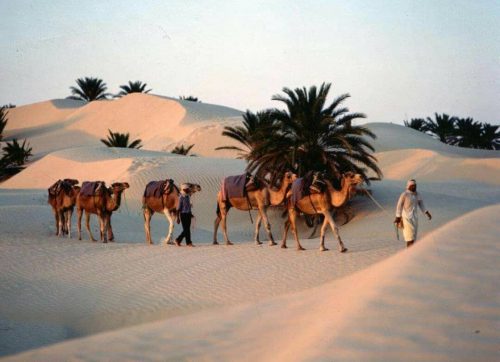
For tourists and sight seekers coming in from Tunisia, your best bet is perhaps seeing the gateway towns of Tozeur, or Douz. Both of which are a half days bus travel from Tunis. For a truly, beautiful view of the Sahara Desert’s beauty, the remote outpost of Ksar Ghilane south of Douz holds an abandoned fortress that many people travel to see.
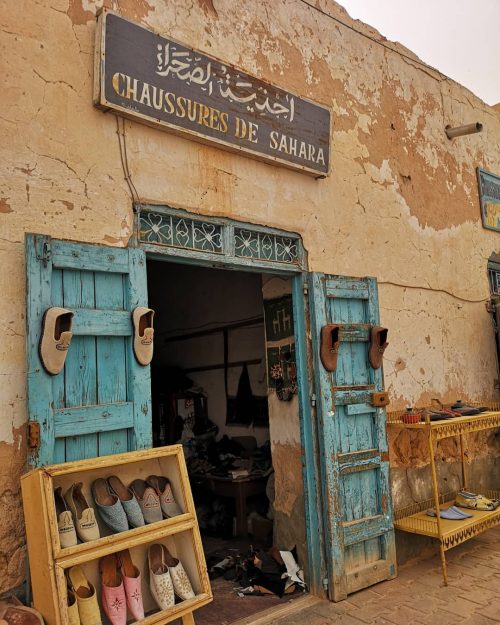
The third location that might be more ideal is, of course, Egypt. Egypt is a country that has bordered the Sahara Desert for thousands of years and is home to a lot of old remnants of it’s past. Best of all, a string of oases that dot through its section of the Saharan lands make travel through the area fairly easy to navigate, and a lot more comfortable than you’d find in the previous two sections of the Sahara Desert. The best places to go typically start in the Northern section of Egypt at Siwa, or at the South at the oases of Al Kharga, Dakhla, Farafra, or Bahirya.

The best part of all is that each of the Southern Oases sees enough tourists there that travel there, that bus transportation is available at Cairo at fairly decent prices and typically take at least a day to complete the journey. Best of all, with Egypt being more economically stable than Morocco and Tunisia, Four Wheel vehicle drives are typically more common than camel rides, which mean that you’ll generally see more of the desert in relative safety.
When to Go to Sahara Desert
Now, if all of the above sounds relatively nice and you feel that you’re ready to travel to the Sahara Desert, you might want to sit down and think about the proper time to go and see it. While you COULD typically see it any time of the year, since it’s a desert and it’s not like it’ll ice over, there’s actually the best time of the year to go.
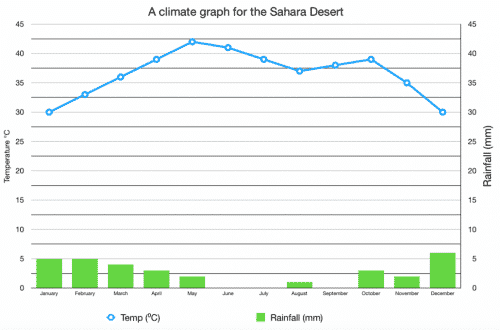
The reason for this is that the Sahara does see seasons, much like the rest of the earth does. Meaning that summer seasons will be hotter than normal, and be excruciating if you’re not prepared for the heat, while winter seasons temperatures can drop at night to below freezing and chill you down to the bone. Plus, seasonal weather effects such as sand storms, tornadoes, and even mild rainfall can happen as well which can present unique challenges and dangers to you if you’re not prepared.
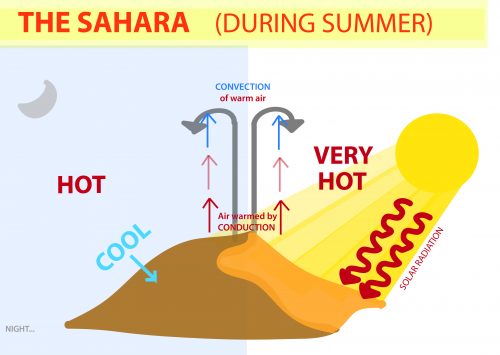
It’s typically advised that the best time for people who aren’t used to the Sahara Desert is between October and April, at least early May. These typically represent milder seasons in the Sahara, where daytime temperatures are bearable without being painful. Considering it’s known as the hottest desert in the world, you’ll still have to prepare for the extreme temperatures, but it’s a difference between cooking an egg in a skillet and cooking you in the sun. Plus, nighttime temperatures as well are milder, and won’t leave you frozen. Every traveler who is willing to take other travels to the Sahara will also tell you to avoid June to early September, as the heat can kill within minutes if you’re not prepared.
What to Wear
The Sahara Desert, as had been mentioned by now several times, is a very hot and dry place. That actually in itself is a massive understatement, because it is the hottest place known on Earth right now, with temperatures that exceed what is recommended for healthy exposure. In fact, it’s very easy to die out in the Desert if you’re not prepared. Because of that, there are a few things that you MUST wear for your comfort and protection that’s non-negotiable. Things that can mean the difference between relaxing, and outright death.
The first item is closed toed shoes. Whether its sneakers, boots or anything else. Most people make the mistake of thinking that sandals and bare feet are preferable because it’s an airy, sandy place. However, the sand itself conducts heat and sand can scorch and burn any exposed skin if it gets too hot. Because of this, it’s recommended to actually carry two pairs of shoes just in case one pair fails. Luckily, evenings and even night a person can walk around barefoot, though it’s still recommended to maintain proper protection.
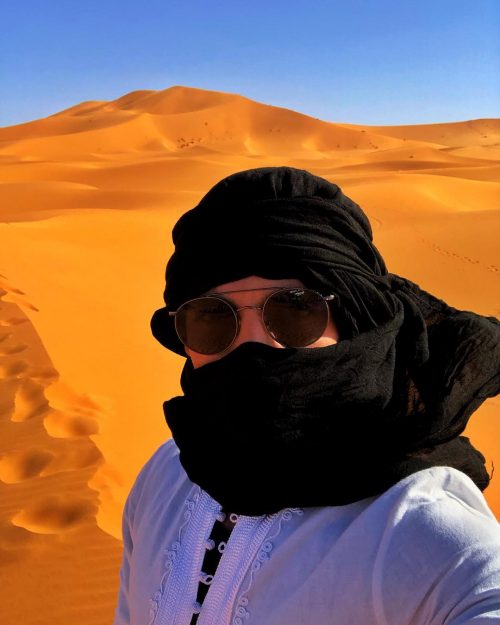
The second item to wear is a light scarf: Usually made of cotton or other light material that won’t warm you up too much, but still keep you protected. The scarf itself is typically worn to protect the face during a sandstorm since it’s incredibly unhealthy to breathe in all that sand and dust particles that can get kicked up during such a storm. Plus, it’ll also help during windy days to protect your face.
The third item is a pair of sunglasses. Which makes a lot of sense. A lot of sunlight gets reflected off of the sands, and bounces back towards you. Sunglasses will help reduce eye strain, protect your vision, keeps you from squinting, AND looks fashionable as well! Not only that, but any sand that gets picked up will be deflected, so you’re not getting an eyeful of sand all the time.
The fourth item to come prepared with is a jacket. It’s a misconception that the Sahara Desert is always hot. It’s true that it’s the hottest place in the world, but that’s only during the day. Heat seeps out of sand rather quickly during the night, so when the sun finally dips down over the horizon line you’ll find quickly that the Sahara freezes rather quickly. The jacket not only will keep you protected from sand storms, and sand, in general, getting all over you, but also keep you nice and warm during the night.
For the fifth item, you should always carry some sort of canteen. While water bottles themselves are easy enough to carry, it’s actually recommended to have a sturdier form of water carrying. Mostly because the heat could potentially melt the plastic bottles and ruin the water. Staying hydrated in the desert is very, very important, especially during the hotter parts of the day. You’ll be sweating a lot and you have to make up for that with hydration.
The sixth item is sun protection, for obvious reasons. The sun will quickly bake any exposed skin, and it’s not uncommon to receive second-degree burns if you’re not careful.
Lastly, the last, and seventh, item to bring with you is a camera. Seeing the Sahara Desert is a once in a lifetime opportunity if you’re not used to living in the desert conditions. There’s so much history, and so many sights to see out there that’s more than just sand dunes and endless blue skies. There’s so much to see that you’ll not want to ever forget any of it.
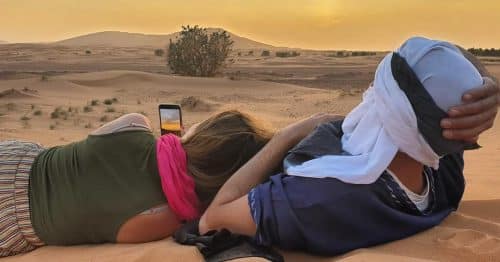
What to Do
A lot of people tend to think that there’s nothing to do out in the Sahara Desert that it’s nothing but endless sands, and nothing yet. Surprisingly, that’s the furthest thing from the truth. While the Sahara isn’t diverse in an ecosystem and hasn’t been a major point of human civilization in its history, there’s still quite a lot of things that people can do out in the Desert. After all, people have been traversing it for generations, and those people had to entertain themselves somehow. Not only that, but the Sahara is a big tourist destination that sees a lot of travelers in the modern era. So there’s actually quite a lot you can do out there.
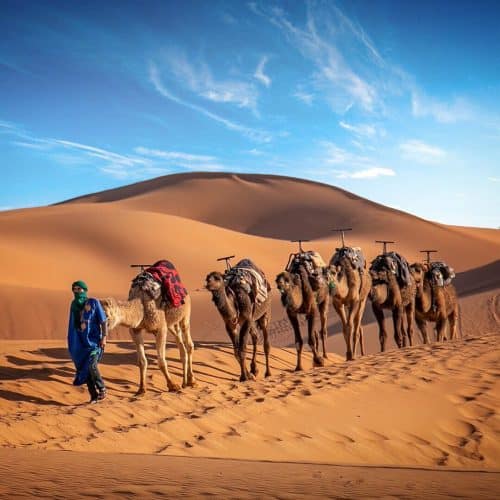
First and foremost is that you can take a Camel Trek. Camel’s might seem like a very uncomfortable way to travel, but they’re typically padded up with blankets and supplies to maximize comfort, and can carry camping supplies, extra water, and other necessities for survival out in the Desert.
The next best thing that someone out there can do is sandboarding. These typically happen closer to civilization, rather than out in the middle of the desert (mostly for safety reasons), but are a very fun activity to do. Sand Boarding is much like it’s opposite, Snow Boarding, in that you take a board, and slide down the large sand dunes on them. You can even sled down them as well if boarding isn’t your thing.

The third thing that people tend to do that’s extremely popular is watch the sunrise or sunset. Honestly, it’s been said that the most beautiful sunrises in the world happen in the Sahara Desert, and you can see for yourself whether or not that it’s true. What’s more, is if you have a camera on hand (which you should) you can even take pictures for yourself to remember the occasion.
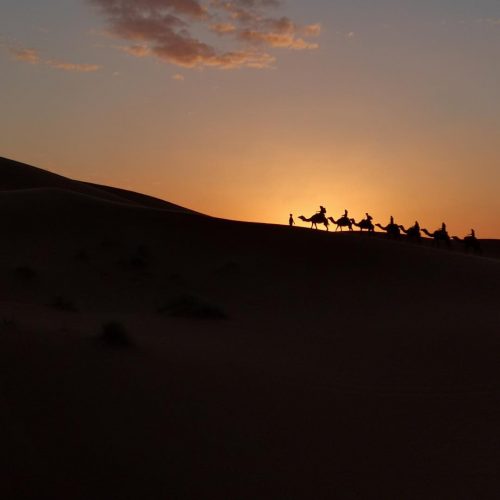
And really, that’s all you need to know.

